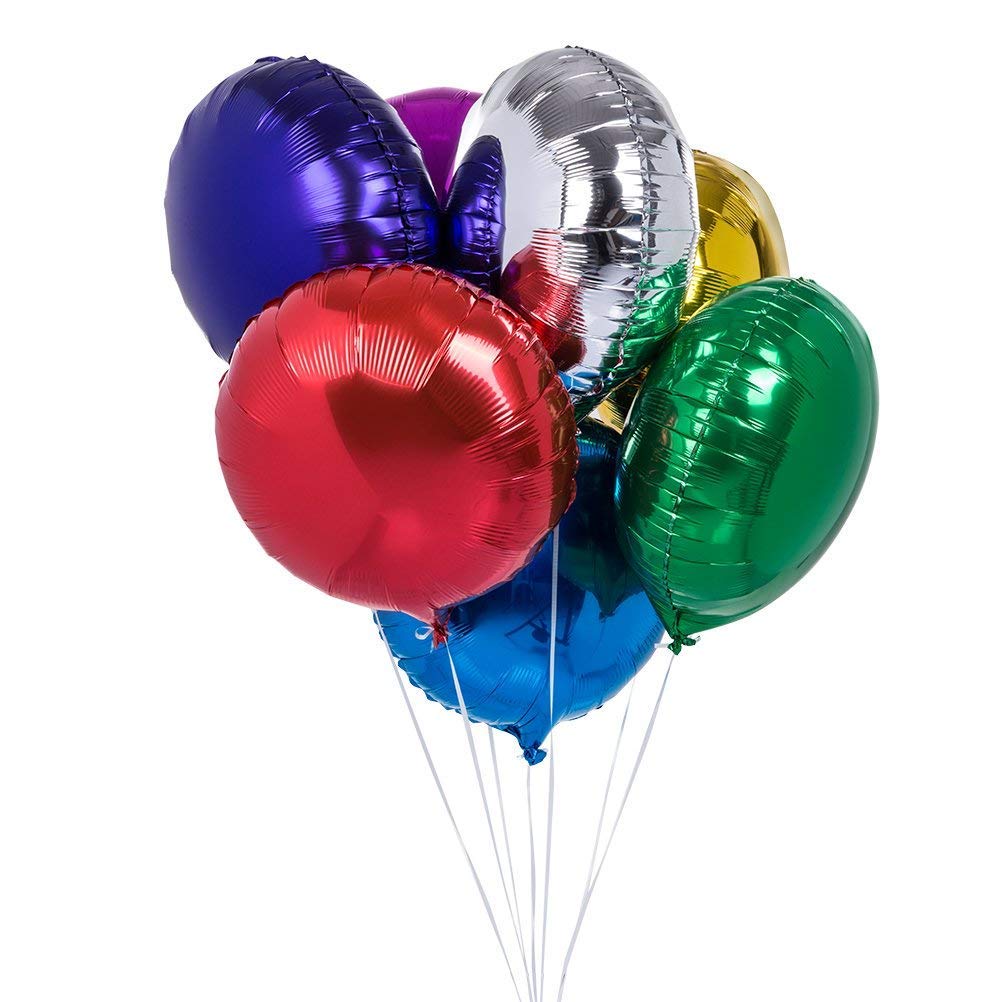Introduction: The Popularity of Foil Balloons
Foil balloons have become increasingly popular for celebrations and events due to their vibrant colors, durability, and ability to hold helium for an extended period. While they bring joy and festivity to special occasions, knowing how to safely deflate foil balloons is essential for proper disposal and environmental stewardship. In this guide, we’ll explore methods for safely deflating foil balloons to ensure they can be reused, recycled, or disposed of responsibly.

Understanding Foil Balloon Construction
Foil balloons, also known as Mylar balloons, are made of metallic-coated nylon or polyester materials, giving them a shiny, reflective appearance. Unlike traditional latex balloons, which are biodegradable, foil balloons are not porous and do not biodegrade naturally. This makes proper deflation and disposal crucial to minimize environmental impact and prevent harm to wildlife.
Safety Precautions: Handling Foil Balloons Responsibly
Before attempting to deflate a foil balloon, it’s important to take safety precautions to avoid injury or damage. Ensure the area is clear of sharp objects or hazards that could puncture the balloon during deflation. If the balloon contains helium, avoid inhaling the gas directly, as it can displace oxygen in confined spaces and pose a suffocation risk.

Method 1: Releasing Helium Safely
If the foil balloon is filled with helium, the first step in deflating it is to release the gas safely. Using a small straw or the nozzle of the helium tank, gently press against the balloon’s valve to release the helium gradually. Hold the balloon securely to prevent it from flying away as the gas is released. Once the balloon is empty of helium, proceed to deflate it manually.
Method 2: Manual Deflation
To manually deflate a foil balloon, locate the self-sealing valve where the balloon was inflated. Insert a straw or small, blunt object into the valve opening to release the trapped air gradually. Press down gently on the balloon’s surface to expel the air, taking care not to puncture or tear the material. Repeat this process until the balloon is fully deflated and flat.

Method 3: Using a Vacuum Cleaner
Another method for deflating foil balloons involves using a vacuum cleaner with a hose attachment. Insert the hose attachment into the valve opening of the balloon and turn on the vacuum cleaner at a low setting. The suction from the vacuum cleaner will draw the air out of the balloon, causing it to deflate gradually. Monitor the balloon closely to prevent overinflation or damage to the vacuum cleaner.
Disposal Options: Reuse, Recycle, or Dispose Responsibly
Once the foil balloon is fully deflated, consider your disposal options to minimize environmental impact. If the balloon is still in good condition, it can be reused for future celebrations or events. Alternatively, check with local recycling facilities to see if they accept foil balloons for recycling. If recycling is not an option, dispose of the deflated balloon in the regular trash, ensuring it is securely tied or enclosed in a plastic bag to prevent it from becoming airborne litter.

Preventing Accidents: Supervising Balloon Deflation
While deflating foil balloons may seem like a straightforward task, it’s essential to supervise the process, especially if children are involved. Children should be supervised by adults when handling balloons to prevent accidents or injuries. Ensure that young children do not attempt to deflate balloons on their own and keep small parts, such as straws or valve attachments, out of reach to prevent choking hazards.
Environmental Considerations: Minimizing Balloon Release
In recent years, there has been growing awareness of the environmental impact of balloon releases, including those involving foil balloons filled with helium. Balloon releases can pose risks to wildlife, marine life, and the environment, as deflated balloons can end up as litter in natural habitats or waterways. Whenever possible, avoid balloon releases altogether and opt for alternative forms of celebration that are eco-friendly and sustainable.
Alternative Uses: Repurposing Deflated Foil Balloons
Rather than discarding deflated foil balloons, consider repurposing them for creative and practical uses. Deflated foil balloons can be cut into strips and used as colorful decorations for crafts, scrapbooking, or gift wrapping. Additionally, the metallic material of foil balloons can be repurposed for DIY projects such as homemade greeting cards, party decorations, or even clothing embellishments. Get creative and explore different ways to give new life to deflated foil balloons.

Educational Opportunities: Teaching Environmental Responsibility
Deflating foil balloons presents an opportunity to educate children and adults alike about the importance of environmental responsibility and conservation. Use the process of deflating and disposing of balloons as a teachable moment to discuss topics such as waste reduction, recycling, and protecting natural habitats. Encourage children to brainstorm eco-friendly alternatives to balloon releases and engage them in activities that promote environmental stewardship.
Community Engagement: Organizing Cleanup Efforts
In communities where balloon releases are common, consider organizing volunteer cleanup efforts to remove balloon litter from public spaces. Coordinate with local environmental organizations, schools, or community groups to plan cleanup events focused on collecting and properly disposing of balloon debris. Not only does this help mitigate the environmental impact of balloon releases, but it also fosters a sense of community pride and environmental stewardship.
Conclusion: Deflating with Care
How to deflate foil balloons-Properly deflating foil balloons is essential for responsible waste management and environmental conservation. By following safety precautions and employing the appropriate deflation methods, you can ensure that foil balloons are safely deflated and disposed of without causing harm to wildlife or the environment. Whether reusing, recycling, or disposing of foil balloons, let’s deflate with care and keep our celebrations both festive and eco-friendly.
As we navigate the joy and festivity of celebrations involving foil balloon, let’s do so with a commitment to environmental responsibility and stewardship. By safely deflating foil balloon, minimizing balloon releases, and exploring alternative uses and disposal options, we can enjoy our festivities while minimizing harm to the environment. Let’s celebrate responsibly, ensuring that our actions reflect our respect for the planet and all its inhabitants.


